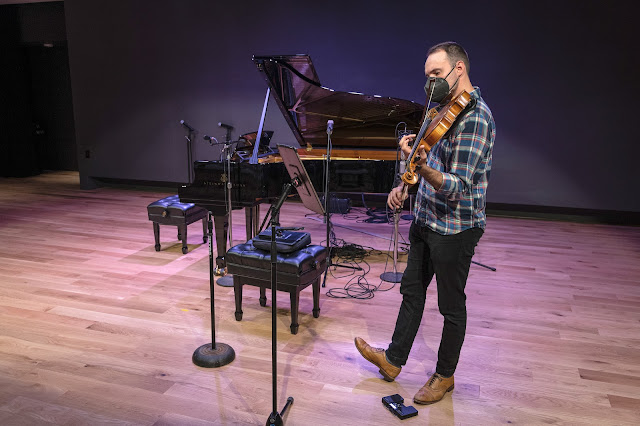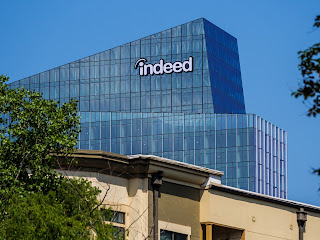The combination of the Olympus 40-150mm f4.0 Pro and the Panasonic GH5ii. They play well together. Lately I've been in a mellow mood. Since I came back from Santa Fe last week I realized just how relaxed and anti-dramatic my home life is. B. and I get along so well that it's almost eerie. The house runs like a precision machine. The external domestic tasks such as lawn care and general upkeep have been relegated to trusted suppliers. In the next few weeks the painters will arrive and repaint the living room, the entry way and a long hallway. I thought about painting stuff myself but the living room ceiling peaks at 28 feet and I have no desire to stand on high ladders anymore. Accounting and bookkeeping are handled by a CPA I've trusted for years. (decades). Everything seems to run like a little retinue of perpetual motion machines, most of which require no intervention from me.
B. and I are both good enough and efficient enough cooks and we've long learned to make weekly menus and shopping lists in order to spend minimal amounts of time shopping for groceries. Generally I hit the store only when I want to pick out fresh fish or veggies for same day cooking. Otherwise we take turns once or twice a week roaming Whole Foods with a shopping list that mostly covers the majority of ingredients for home cooked meals. It's fast and easy and if it's my turn but I'm feeling unmotivated I can always have produce and staples delivered.
We learned early on to take things easy when there's nothing pressing. In the mornings I go to swim practice and then read the "papers" online over coffee at my neighborhood coffee shop. Sometimes I get a breakfast taco. Occasionally I splurge and add a danish or croissant. B. spends the morning at yoga and then out walking the hills in the neighborhood. We generally fend for ourselves for lunches during the week but a Saturday lunch together is a ritual we rarely break. There's a little bistro called "Blue Dahlia" and they make lots of healthy food. We go there by default but we change the routine when it starts to feel a bit stale.
We nearly always have dinner together. Sometimes I cook. Sometimes she cooks. And sometimes, if the weather is pleasant, we make reservations at one of our favorite restaurants; the ones that feature outdoor patio dining.
Leading a leisurely home live gives me energy to spare for art projects and my photography. Lately I've turned down more work than I've accepted. And I've turned down my old publisher's requests that I write more books --- several times. It's a wonderful feeling to be able to say..."NO." Nothing about life seems rushed now. Nothing work-related seems to gnaw unbidden at the edges of consciousness. There are no insurmountable deadlines.
Of course nothing perfect lasts forever in its current form. There's always entropy and an erosion toward chaos but you have to savor the good things while you have them. Change comes soon enough.
Weird cameras. "Those whom the the gods would destroy they first make bored". (and NO. I don't care what the exact quote is or where it came from..). My biggest fault in my pursuit of photography is that I get bored working with the same gear over and over again. I also get bored lighting things the same way ad infinitum. No sooner did I get the Panasonic GHx cameras back in the studio when I stumbled across three used Olympus OMD EM-1X cameras.
Have you seen these beasts? They are basically the Canon 1DX or Nikon D5s of the micro four thirds world. Big bodies that are made with integral vertical grips and ample space for holding two big batteries simultaneously. They use the same imaging sensor as was first introduced in the OMD EM1-2 but the features that separate the EM-1X from the rest of the Olympus cameras (Pre-OM1) is that the big EM-1X was one of the first dedicated cameras to incorporate machine learning and very high speed processing which allows for creative autofocus modes but also things like electronic neutral density filtering and also handheld high resolution modes that seem to work beautifully.
The camera was created to win some of the sports photography space. It features super fast frame rates and has a tenacious focus tracking ability. But, of course it's very big compared to anything else in its format family and when it was introduced it was pricy. The list in 2019-2020 was $3,000. I don't think the camera sold well at all. The current NEW price has been dropped by dealers to a uniform $1795. That's over $1,000 off the intro price.
Crazy cameras like this really attract me. I find over-engineering fascinating and somewhat endearing in a camera body. It was one of the first popular, interchangeable lens cameras to boast a IP rating for water and dust intrusion. Although, to be fair, Leica has been publicly rating their camera bodies such as the SL and the SL2 with IP ratings for years. The SL2 boasts an IP rating of 54 which means it can also withstand a nuclear explosion or being run over by a cement truck. While being sprayed off with a fire hose.
The Olympus OMD EM1X came to my attention when I dropped by Precision Camera to pick up a lens. There were three of the EM1X bodies sitting in the m4:3 used equipment case just calling out to me like the Sirens trying to lure Odysseus and his crew onto the deadly rocks.
To be clear, this not a camera I need and if I did need a third camera (m4:3) for work, or even for my personal imaging, it would make much more sense to add another GH5ii or GH6 because of the similar menus and handling. If I was squeezed for cash it would make much, much more sense to buy a new Panasonic G9 now that they are back on sale for under $1,000. But there's something about big, weird, purpose built cameras that transforms them instantly into a collector status camera. It's an oddity that presages an inflection in changing camera capabilities that are coming in newer generations.
I made an offer to the used equipment manager for one of the bodies. I sent him my offer via e-mail but he won't see it till Monday. Maybe by then I will have come to my senses. Or someone with a greater passion for the eclectic and absurd will venture into the store tomorrow and clean out the supply. That would make my decision not to proceed much easier... But fate works the way fate works.
Is there anyone who reads the blog that owns or has owned one of these "Lockness Monster" cameras? If so please let me know your experiences and if you've kept yours. You may or may not be reading more about the X camera here. Who knows where the weekend will take us?
Summer Arrives. It was just plain nasty outside today. The temperature here in the hills West of downtown hit about 96° today but the real story was the mix of temperature and humidity. The "feels like" temperature of the combined measures was something like 105° and more disconcertingly the heat wave came out of nowhere after a very mellow and well behaved Spring. I looked at the forecast and was a bit dismayed to see that it's supposed to be in the high 90s all through the next week. And beyond. No chances for rain either. It was a quick fall off the cliff into another Texas Summer.
I went to swim practice this morning but was happy to spend most of the day cleaning up the studio and reading parts of several biographies and autobiographies of or about Vladimir Nabokov. Just reading his essays makes one feel smart. But the real lure of the experience is sitting quietly in the cool currents of the air conditioning and occasionally closing one's eyes and drifting off for a moment or two. Conflating the Russian emigre's writing with stories made up on the spot by my subconscious about industrial strength cameras. It all seemed pertinent --- in the moment.
I've been thinking about the people of Russia lately. Especially so after reading some Nabokov. I spent the better part of a month in St. Petersburg in 1995. Just a few years after the fall of the wall and in the flux of the breakup of the Soviet Union. My heart goes out to the Ukrainians but also to the average Russian citizen who is no better informed than the Americans who get their news from Fox.
Such desperate times in which to be so poorly informed. Such desperate times to live under authoritarianism and even more haunting to live in a free country where some of our fellow citizens pine to drag us all into the same authoritarian hell here. In our own country. In our own home. It all makes cameras seem so incidental.

































































